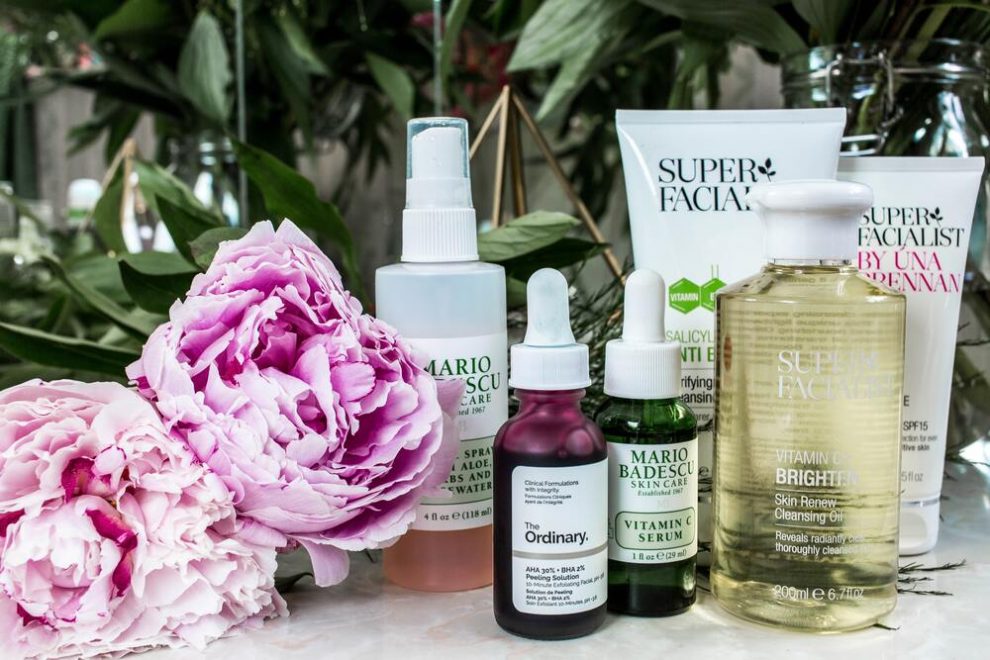I. Introduction
Achieving flawless skin can be a daunting task, especially with all the different skincare products and techniques available. However, with a little bit of knowledge and dedication, it’s possible to achieve healthy, glowing skin that makes you feel confident and beautiful. In this essay, we’ll cover the basics of skincare and provide tips for achieving flawless skin.
II. Understanding Your Skin
Before we dive into skincare techniques and products, it’s important to understand your skin type and concerns. There are six main skin types: normal, oily, dry, combination, sensitive, and acne-prone. Each skin type has its own unique characteristics and requires different skincare routines and products.
A. Skin Type
1. Normal Skin: Evenly balanced skin that’s neither too oily nor too dry.
2. Oily Skin: Shiny, thick skin that’s prone to blackheads and acne.
3. Dry Skin: Dull, rough skin that’s prone to flaking and tightness.
4. Combination Skin: A mix of oily and dry skin, typically with an oily T-zone and dry cheeks.
5. Sensitive Skin: Skin that’s easily irritated, red, or itchy.
6. Acne-Prone Skin: Skin that’s prone to breakouts, blackheads, and clogged pores.
B. Skin Concerns
1. Acne: Clogged pores, blackheads, and breakouts.
2. Hyper-pigmentation: Dark spots or discoloration caused by sun damage, acne, or hormonal changes.
3. Fine Lines and Wrinkles: Sagging, crepey skin that’s prone to wrinkles and fine lines.
4. Dullness: Lackluster, uneven skin tone and texture.
5. Dehydration: Dry, tight skin that lacks moisture.
III. Cleansing
Cleansing is the first and most important step in any skincare routine. It removes dirt, oil, and makeup from the skin and prepares it for the rest of your routine. Here are some tips for choosing the right cleanser and using it effectively:
A. Choosing a Cleanser
1. Look for a cleanser that’s suitable for your skin type.
2. Consider your skin concerns, such as acne, hyper-pigmentation, or fine lines and wrinkles.
3. Opt for a gentle, non-foaming cleanser that won’t strip your skin of its natural oils.
B. Using a Cleanser
1. Wash your face with lukewarm water and a gentle, massaging motion.
2. Use a dime-sized amount of cleanser and work it into a lather.
3. Rinse your face thoroughly with lukewarm water.
4. Pat your face dry with a clean towel.
IV. Exfoliating
Exfoliating is an essential step in any skincare routine. It removes dead skin cells, unclogs pores, and helps your skin absorb products more effectively. Here are some tips for exfoliating:
A. Types of Exfoliants
1. Physical Exfoliants: Scrubs, brushes, and sponges that physically remove dead skin cells.
2. Chemical Exfoliants: Alpha-hydroxy acids (AHAs) and beta-hydroxy acids (BHAs) that dissolve dead skin cells.
B. How to Exfoliate
1. Choose the right exfoliant for your skin type and concerns.
2. Use a physical exfoliant 1-2 times a week, depending on your skin’s sensitivity.
3. Use a chemical exfoliant 1-2 times a week, depending on your skin’s sensitivity.
4. Be gentle when exfoliating, especially around the delicate skin around your eyes and mouth.
V. Toning
Toning is a crucial step in any skincare routine. It helps balance your skin’s pH, removes any remaining impurities, and prepares your skin for the rest of your routine. Here are some tips for toning:
A. Choosing a Toner
1. Look for a toner that’s suitable for your skin type.
2. Consider your skin concerns, such as acne, hyper-pigmentation, or fine lines and wrinkles.
3. Opt for a gentle, alcohol-free toner that won’t dry out your skin.
B. Using a Toner
1. Soak a cotton pad with toner and sweep it across your face.
2. Be gentle when toning, especially around the delicate skin around your eyes and mouth.
3. Allow the toner to air-dry before moving on to the next step.
VI. Moisturizing
Moisturizing is a critical step in any skincare routine. It locks in hydration, plumps up your skin, and helps your skin look healthy and radiant. Here are some tips for moisturizing:
A. Choosing a Moisturizer
1. Look for a moisturizer that’s suitable for your skin type.
2. Consider your skin concerns, such as acne, hyper-pigmentation, or fine lines and wrinkles.
3. Opt for a lightweight, oil-free moisturizer that won’t clog your pores.
B. Using a Moisturizer
1. Apply a pea-sized amount of moisturizer to your face and neck.
2. Use a gentle, patting motion to work the moisturizer into your skin.
3. Allow the moisturizer to absorb fully before applying any other products.
VII. Protecting
Protecting your skin from the sun’s harmful UV rays is crucial for maintaining healthy, flawless skin. Here are some tips for protecting your skin:
A. Choosing a Sunscreen
1. Look for a broad-spectrum sunscreen that protects against UVA and UVB rays.
2. Opt for a lightweight, oil-free sunscreen that won’t clog your pores.
3. Choose a sunscreen with an SPF of at least 30.
B. Applying Sunscreen
1. Apply sunscreen 15-30 minutes before going outside.
2. Use a generous amount of sunscreen and apply it evenly across your face and neck.
3. Reapply sunscreen every 2 hours or immediately after swimming or sweating.
VIII. Conclusion
Achieving flawless skin requires dedication, patience, and the right skincare routine. By understanding your skin type and concerns, cleansing, exfoliating, toning, moisturizing, and protecting your skin, you can achieve healthy, glowing skin that makes you feel confident and beautiful. Remember, skincare is a journey, and it may take time to find the right products and techniques that work for you. But with persistence and consistency, you can achieve the flawless skin you’ve always wanted.
















Add Comment